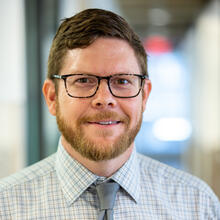Pope Francis was the first Latin American—and the first person from the Western Hemisphere—to be elected to the papacy. He captured the attention of Catholics and non-Catholics alike with his warmth, his down-to-earth expression and his pastoral disposition.
Perhaps the College of Cardinals will discern that the universal church needs more of the same.
Of the 133 cardinals who will vote in the upcoming conclave, 23 are from Latin America. That works out to be about 17 percent of electors, a similar portion of Latin American cardinals who took part in the last conclave.
Few, if any, Latin Americans show up on the speculative lists of who might be elected as the supreme pontiff, or “papabile.” And recently, Cardinal Daniel Fernando Sturla of Montevideo, Uruguay, expressed his doubts to Argentina’s Clarín newspaper that the next pope will be from Latin America.
But it is unclear why another Latin American pope seems unlikely. Pope Francis’ detractors, according to a report from Clare Giangravé of Religion News Service, were heard saying near the end of his papacy, “Never again a Latin American. Never again a Jesuit.” These critics worry that another pope from Latin America would mean a continuation of Francis’ pastoral approach to issues like ministering to L.B.G.T.Q. Catholics and empowering lay leaders.
At the same time, few predicted Cardinal Jorge Bergoglio would be elected in 2013. And a significant share of the world’s 1.4 billion Catholics live in the Americas. So why not?
Of the nearly two dozen Latin American cardinals, a few names stand out.
Cardinal Jaime Spengler, the archbishop of Porto Alegre, Brazil, is the president of the Latin American bishops’ conference (known by its initials “CELAM”). He is also a Franciscan who undertook biblical studies in the Holy Land and earned a doctorate in philosophy from the Pontifical University Antonianum in Rome. Pope Francis elevated him to the College of Cardinals in 2024.
Cardinal Spengler’s archdiocese boasts more than 2.4 million Catholics, and Brazil has more Catholics than any other country in the world—over 120 million. He participated in the Synod on Synodality but has been known to avoid the press.
Last December, however, Cardinal Spengler and other Latin American cardinals joined a Vatican-led initiative to support and promote human rights activists.
“The blood of hundreds of murdered leaders in Latin America and the Caribbean call for justice, and we cannot remain indifferent,” Cardinal Spengler said, according to a report from Catholic News Service. “To honor their memory, we have the duty to make known their efforts to denounce the culture of death that develops from a capitalist and extractive economic model and transnational crimes related to drug trafficking.”
Cardinal Carlos Gustavo Castillo Mattasoglio, the archbishop of Lima, Peru, joined Cardinal Spengler in the human rights initiative.
“The church cannot stop encouraging, inspiring, accompanying local initiatives in the world,” Cardinal Castillo said. “There are so many responses, the people are not silent, they are organizing themselves, but it is discouraging to do it alone.”
Before becoming a bishop, Cardinal Castillo earned a doctorate in theology from the Pontifical Gregorian University in Rome and then taught at the Pontifical University of Lima. He has not shied away from controversy, and has, for example, advocated for lay-run parishes.
Cardinal Castillo calls himself a student of Gustavo Gutiérrez, the late Peruvian theologian and priest often described as the founder of liberation theology. Last year, he suppressed Sodalitium Christianae Vitae, a Peruvian-founded Catholic society for apostolic life.
“The use of religion for purposes other than the extension of the Good News of Jesus is the most destructive thing for the Catholic Church,” he said, according to a report from Crux. “Therefore, I have come to the conclusion that there is no charisma in the Sodalitium.”
Like Cardinal Spengler, Cardinal Carlos Aguiar Retes, the archbishop of Mexico City, also participated in the synod. At 75, he is the same age as Cardinal Castillo but is older than Cardinal Spengler, who is 64. He received his doctorate in biblical theology from the Pontifical Gregorian University in Rome.
In a recent report, Catholic News Service’s Justin McLellan notes that Cardinal Aguiar Retes served as a member of the Dicastery of Culture and Education and the Pontifical Commission for Latin America. So he is well known within the Roman Curia.
He also seems comfortable with the media, publicly describing synodality as “the way of the church” and key to transmitting the faith. The cardinal also recently gave a lengthy interview to Javier Martínez-Brocal of the Spanish daily ABC.
Of Pope Francis, Cardinal Aguiar Retes said, “He has left us a more positive vision of the future, a way forward, a way to avoid confrontation by finding in the other a wealth, not an enemy.” Pope Francis made it clear, he said, that all human beings must be respected because they are creatures of God.
These are only a few examples. The Argentine Cardinal Manuel Victor Fernández was Pope Francis’ choice to lead the Dicastery for the Doctrine of the Faith. Cardinal Odilo Pedro Scherer, the archbishop of Brasilia, is less often discussed of late, but he made many “papabile” lists in 2013. Or perhaps, after Pope Francis has pointed the church’s gaze to the peripheries, the cardinals will find the right person there. Cardinal Chilby Langlois became Haiti’s first cardinal in 2014.
The category of Latin American cardinals might have been expanded to include Latino cardinals from the United States, but Pope Francis did not appoint any. The only U.S.-born cardinal who routinely makes the papabile lists is Cardinal Robert Francis Prevost. Still, Cardinal Prevost did join the Augustinian mission in Peru in 1985 and has been a bishop in Peru since 2015. He definitely knows the region.
Whether or not the cardinals pick another Latin American, the millions of Catholics in the region should influence the direction of the church for decades to come. The effect of the Francis pontificate has only just begun.







